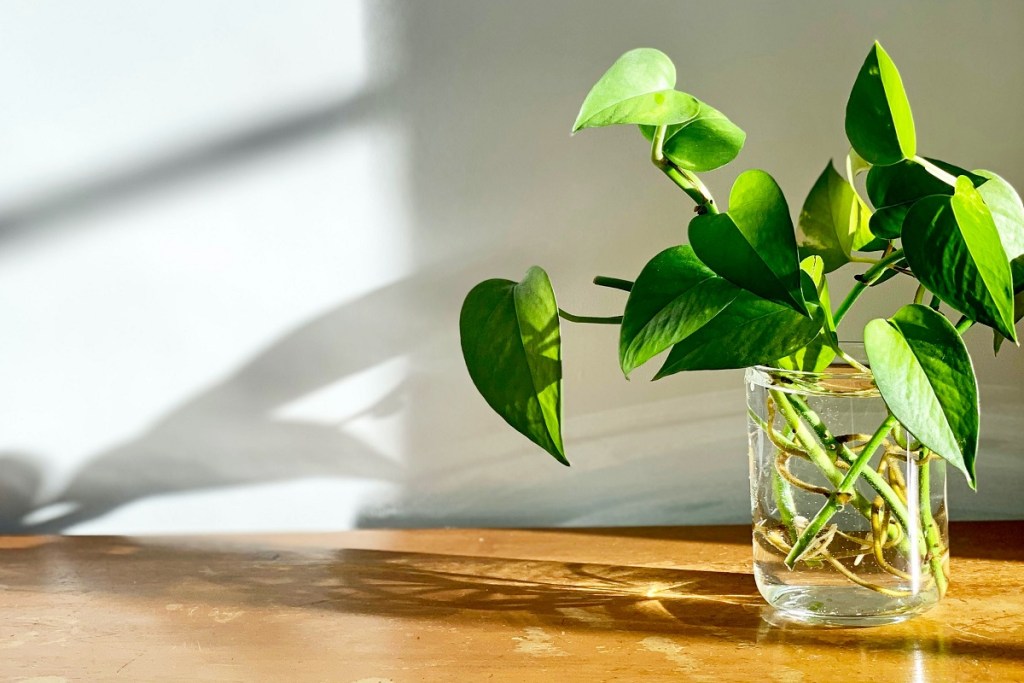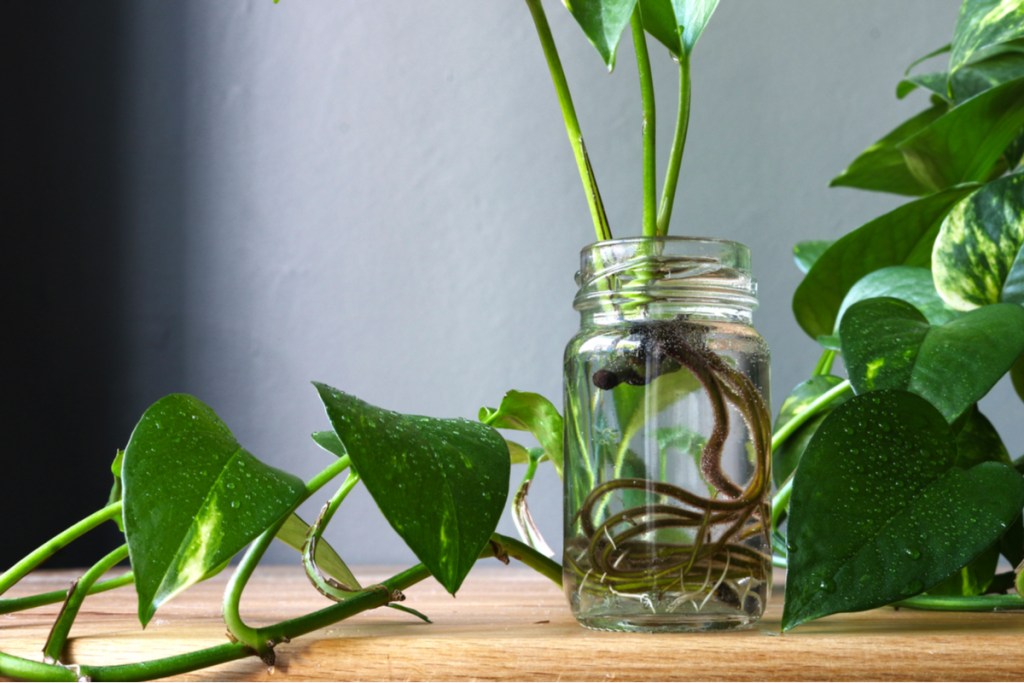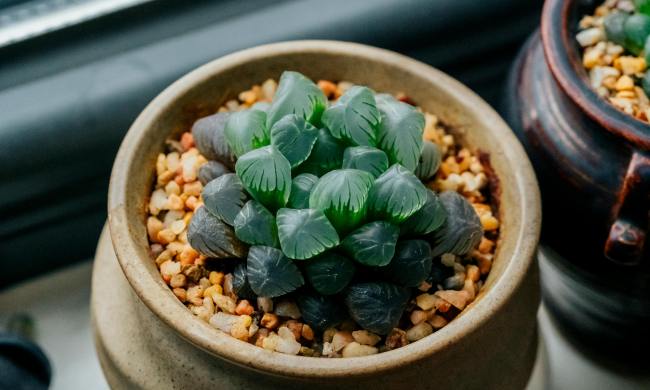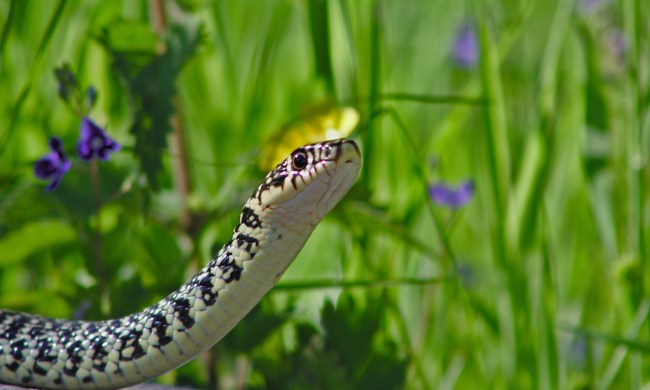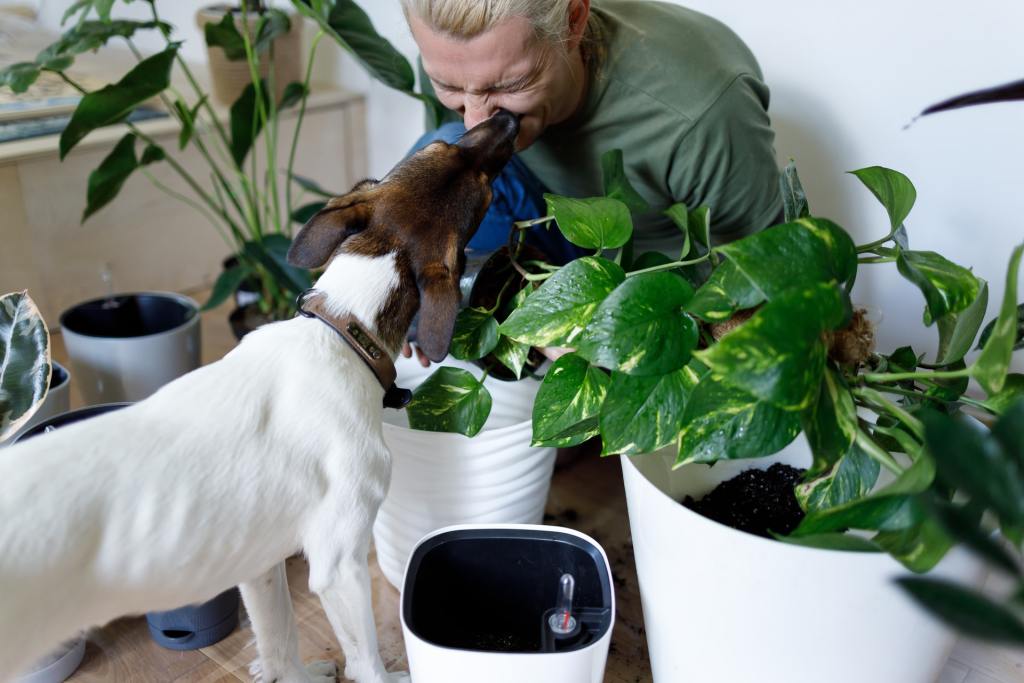
Golden pothos brighten up any home garden and they are one of the easiest plants to propagate in either water or soil. Pothos propagation can be done one of two ways — either hydroponically or in soil. Try both options out to determine which one works best for your space. There are many different types of pothos plants, also known as pipremnum aureum or Devil’s Ivy.
This guide for how to propagate pothos works for pretty much all of them. Golden pothos, one of the most common varieties, is characterized by its yellow undertones. It’s important to note that leaves in a propagated golden pothos plant may contain less yellow spots than the parent plant. Though losing some color still leaves you with not one but two beautiful plants.
Why you might want to propagate a golden pothos
Whether it’s a golden pothos or any other pothos variety, you’ll soon find that these plants grow quickly. So even if you’re not interested in creating more baby plants, cutting and pruning your pothos is vital to keeping it healthy and managing the amount of space it takes up. Your pothos might be hanging and reaching the floor, or it might be threatening to take over the wall you’ve been training it to vine over. Either way, cutting off a bit here and there will allow you to grow baby plants and will also encourage the plant to grow bushier and healthier vines.
If you do want to cut the plant for the sake of propagating, it can be fun to grow tiny plants for yourself, friends, or family members. Sharing a small piece of a larger mother plant can be a great way to share the plant’s love with the people you love.
Another excellent reason for propagating is to decorate another area of your home with adorable cuttings. When propagating using the water method, it can be a cute way to decorate a table, windowsill, or nightstand with a little green — kind of like a bouquet of flowers, but with more green and a longer lifespan.
The best time to propagate golden pothos
You can successfully propagate golden pothos (or any other pothos variety) any time of year. However, if you’re looking for the best success rates, take your cutting in spring or summer when the days are longer, and the little cutting can get as much sun as it needs.
What you’ll need to propagate
The list of tools needed to propagate is pretty simple. You likely already have all of these, if not acceptable alternatives.
- Sanitized pruning shears or heavy-duty scissors
- Small glass bottle, jar, or cup
- Rooting hormone (optional)
- Water or soil
- Pothos plant cuttings
Before you begin, you might want to choose a location that won’t be ruined if it gets dirty or wet. Cuttings can still have soil on them depending on where they were taken, and you’re likely to spill or drip water at some point.
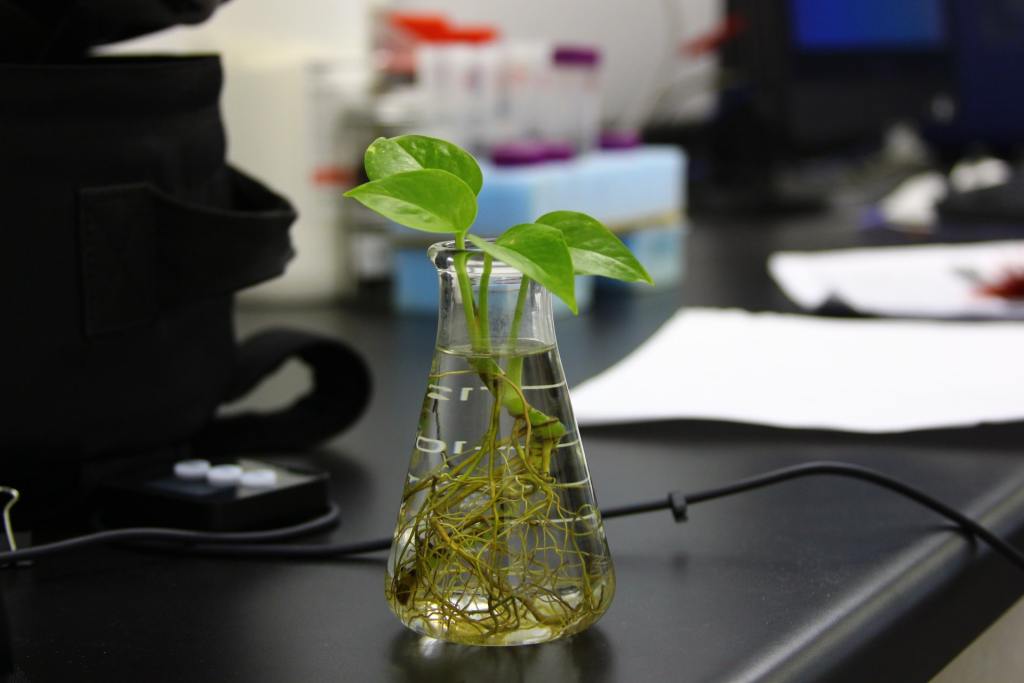
How to propagate a golden pothos
First things first, you’ll need to take the cuttings from the plant. When working with pothos, it’s important to remember that these are considered toxic plants. They have a chemical crystal that will rip and tear the skin of your hands, face, or mouth. While this is usually mild and only irritating, there have been rare cases of it causing tightened airways and difficulty breathing. So be on the safe side and wear gloves when cutting and working with pothos plants of any variety.
Taking a cutting
Take a minute to study your plant before you start chopping. It’s essential to choose your cuttings wisely to ensure the cuttings and the plant are as healthy as can be. If you’re trying to manage the plant’s length, you probably already have a good idea of where you’ll be cutting. Still, think about how much you want to take off and if you’ll be taking more than one section off.
If you’re pruning to encourage the plant to grow bushier, take a little cutting from each vine or any vine that seems to be growing thinner or smaller leaves. Note that if you do see smaller leaves and straggly-looking vines, this might be a sign that your plant needs more sunlight.
When you’ve decided where you want to cut, here’s what to look for while cutting. On the stem, you’ll see brown spots down the vines. Those are root nodes, the places where the vine will send out roots once you’ve propagated. To ensure a successful operation, you’ll want a few root nodes per cutting. It’s best practice to cut about 1/8 of an inch below a root node.
Ideal cutting size
There’s no one size fits all for how big or small the cutting should be. For example, you can have one leaf with a 2-inch vine or take 12 inches with several leaves. Both will likely be successful cuttings as long as they’re cared for properly. Even stems with a healthy node but no leaves can be propagated, as leaves will start to grow over time.
Place cutting in water or soil
Once you have your adorable pothos cuttings, you’re halfway done! Now all you need to do is prepare your propagation jar, bottle, or cup. This includes either filling it with water if you’ll be doing water propagation or filling it with well-draining soil if you’re using the soil method.
With your water or soil containers ready, you can dip your cutting into the optional rooting hormone or put them directly into the water or soil. Since pothos have such high propagation success rates, you can safely skip the rooting hormone, but you’re welcome to use it if it makes you feel better.
Where to put the cuttings
Your little cuttings are looking adorable in their little water bottles or soil cups, and you’re ready to find them a home. While they’ll need lots of indirect sunlight, don’t put them in a window that gets a lot of direct light. Too much sun can burn and kill pothos plants, especially vulnerable cuttings.
Golden pothos care
If you have a water propagation setup, you’ll want to change out the water every three to four days. If you have soil cuttings, be sure to water the soil before it dries out completely. Cuttings need lots of moisture to encourage root growth. You should be able to see root growth within two weeks, but if you don’t, don’t panic. It could take longer depending on your conditions and the condition of the cutting.
With just some water, a cup, and a plant, you can create new baby plants to share and gift to yourself or your friends and family.
Using grow lights for plants
Pothos will be plenty happy with most forms of artificial light, whether it is a well-placed lamp or a proper indoor grow light for plants. Adding an additional light source to your plants will help them grow faster and keep them healthy throughout the dark winter months.
Pothos really don’t require much light at all, but prolonged exposure to artificial light can cause leaves to burn and wilt. If using a grow light, put it on the lowest setting and make sure leaves are not physically touching it. If they grow tall enough to touch the grow light, it may be time to propagate once more.
You ideally want the grow light to mimic the natural cycle of the sun. If you have one with a built-in timer, this makes it easy to ensure your plants are getting about 8 to 10 hours of light per day. If your light doesn’t have a timer on it, try to shut it off around sunset.
Recycling water
It may seem counterintuitive, but hydroponically propagating your plants is actually a good way to conserve water. This can be especially important during the summer months if you live in an area with a dry climate or somewhere with perpetual drought, like Southern California.
As long as your pothos is healthy — not infested with bugs or disease, or are not wilted or rotting — you can reuse the water to feed other potted plants in your house. This is recommended particularly if you use a root hormone in your hydroponic plants, as the leftover residue will go directly into the roots of your plant.
Of course, plants should not survive off of recycled water alone. Many of the essential nutrients are soaked up the first time around. But if you have a plant that looks dry in between waterings or a plant that consumes a lot of water, it doesn’t hurt to use some here and there.
How long will a propagated pothos live?
Plants propagated in water or the ground have the potential to live for many years after. Eventually, new leaves and roots will begin to grow out of the cutting. Roots grown in water tend to be thinner and more delicate than roots grown in the ground or soil. If you are transplanting your hydroponic plants into soil down the line, be sure to keep them super moist for the first few weeks as they get used to living out of water.
It’s possible to grow dozens of plants from one source. Oftentimes, some of them may die off through no fault of your own. When cutting from an original plant, try making several new cuttings at once to ensure at least some of them live. Pothos plants are one of the easiest to propagate, and it’s a simple way for any beginner to experiment with what works best.


